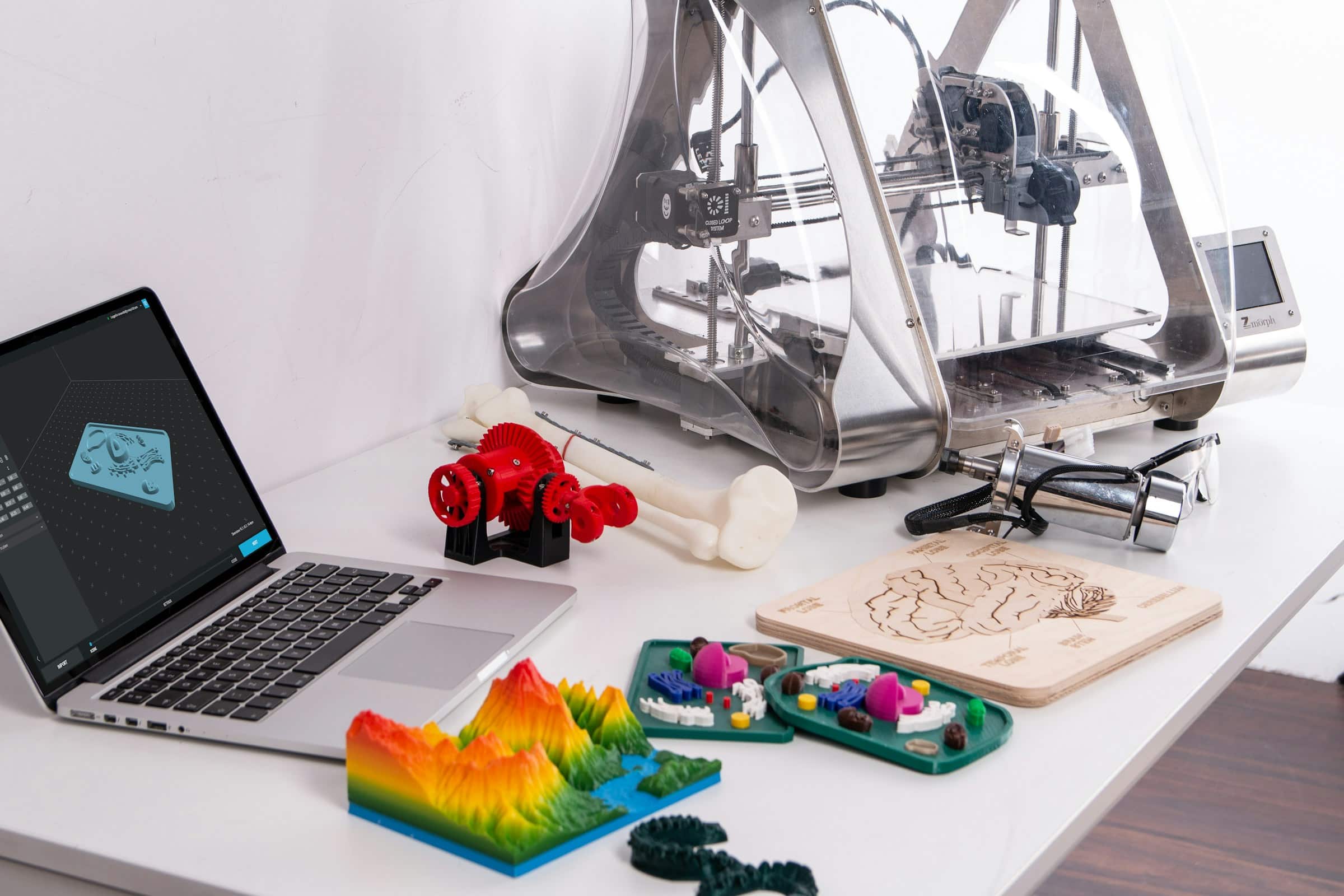What Are the Challenges and Opportunities of 3D Printing in UK Healthcare?

3D printing is transforming various industries, and healthcare is no exception. As the UK healthcare market continues to evolve, the integration of 3D printing technology holds great promise and presents unique challenges. This article delves into the opportunities and challenges of 3D printing in UK healthcare, providing insights into how this technology is shaping the future of medical devices and patient care.
Revolutionizing Medical Device Manufacturing
The introduction of 3D printing technology in healthcare has sparked a revolution in the manufacturing of medical devices. This technology allows for the creation of complex and patient-specific models that were previously impossible with traditional methods. From prosthetics to surgical instruments, 3D printing is enhancing the precision and customization of medical devices.
Lire également : What Are the Ethical Implications of Using AI for Surveillance in UK Public Areas?
Customization and Patient-Specific Solutions
One of the most significant advantages of 3D printing in healthcare is the ability to tailor medical devices to individual patients. Traditional manufacturing methods often result in generic devices that may not fit every patient's unique anatomy. However, 3D printing enables the creation of custom prosthetics, implants, and orthopedic devices that match the patient's specific measurements. This customization not only improves the fit and comfort of these devices but also enhances their functionality.
Speed and Cost-Effectiveness
3D printing can significantly reduce the time and cost associated with prototyping and manufacturing medical devices. Traditional methods require the creation of molds and tooling, which can be expensive and time-consuming. In contrast, 3D printing allows for rapid prototyping, enabling healthcare providers to quickly iterate and refine designs. This speed is particularly valuable in emergency situations where timely intervention is crucial.
Lire également : How Can UK Retailers Use Machine Learning to Improve Customer Segmentation?
Complex Designs and Innovation
The ability of 3D printers to produce intricate designs opens up new possibilities for innovation in medical devices. For instance, researchers can create complex drug delivery systems with precise control over drug release profiles. In addition, 3D printing allows for the development of novel surgical tools that improve the precision and outcomes of medical procedures. As the technology continues to advance, we can expect even more groundbreaking innovations in the field of medical devices.
Enhancing Surgical Procedures
3D printing is not only transforming the manufacturing of medical devices but is also revolutionizing surgical procedures. Surgeons can leverage this technology to create detailed anatomical models, plan complex surgeries, and improve patient outcomes.
Pre-surgical Planning and Simulation
One of the primary applications of 3D printing in surgery is the creation of patient-specific anatomical models. These models are generated from imaging data, such as CT scans and MRIs, and provide surgeons with a tangible replica of the patient's anatomy. By using these models, surgeons can plan procedures with greater accuracy and anticipate potential challenges. This pre-surgical planning reduces the risk of complications and improves the overall success rate of surgeries.
Custom Surgical Guides and Implants
3D printing enables the production of custom surgical guides that assist surgeons during procedures. These guides are designed based on the patient's anatomy and help ensure precise placement of implants and instruments. Additionally, 3D-printed implants can be tailored to fit the patient's bone structure, promoting better integration and reducing the risk of complications. The use of custom surgical guides and implants has been shown to improve surgical outcomes and shorten recovery times.
Minimally Invasive Surgery
The precision and customization offered by 3D printing contribute to the advancement of minimally invasive surgical techniques. By creating accurate models and guides, surgeons can perform procedures with smaller incisions, leading to less tissue damage and faster recovery for patients. This shift towards minimally invasive surgery is particularly beneficial for complex procedures, such as spinal and craniofacial surgeries, where precision is paramount.
Drug Development and Delivery
The impact of 3D printing extends beyond medical devices and surgical procedures to the realm of drug development and delivery. This technology offers new possibilities for creating personalized medications and innovative drug delivery systems.
Personalized Medicine
3D printing has the potential to revolutionize personalized medicine by enabling the production of patient-specific drug formulations. Traditional drug manufacturing methods often result in standardized doses that may not be optimal for every patient. With 3D printing, pharmacists can create customized medications with precise dosages tailored to the patient's needs. This personalization improves treatment efficacy and minimizes the risk of adverse effects.
Innovative Drug Delivery Systems
The versatility of 3D printing allows for the creation of complex drug delivery systems that offer controlled and targeted release of medications. Researchers are exploring various approaches, such as 3D-printed microneedles for transdermal drug delivery and implantable devices for sustained release. These innovative systems have the potential to enhance patient compliance and improve therapeutic outcomes.
Accelerating Drug Development
The traditional drug development process is lengthy and costly, often taking years before a new drug reaches the market. 3D printing can accelerate this process by enabling rapid prototyping and testing of drug formulations. Researchers can quickly iterate and refine their designs, leading to faster development timelines and reduced costs. This acceleration is particularly valuable in the context of emerging health threats, where timely access to new treatments is critical.
Regulatory and Legal Considerations
While the benefits of 3D printing in healthcare are substantial, the technology also introduces new regulatory and legal challenges. Ensuring the safety and efficacy of 3D-printed medical devices and medications is paramount, and regulatory bodies must adapt to address these emerging issues.
Regulatory Frameworks
The regulatory landscape for 3D-printed medical devices is still evolving. In the United States, the Food and Drug Administration (FDA) has issued guidance documents to provide clarity on the regulatory requirements for 3D-printed products. Similarly, in the UK, the Medicines and Healthcare products Regulatory Agency (MHRA) is working to establish guidelines for the approval of 3D-printed medical devices. These frameworks are essential to ensure that 3D-printed products meet the necessary safety and quality standards.
Quality Control and Standardization
Maintaining consistent quality and performance of 3D-printed medical devices is a significant challenge. Variability in materials, printer settings, and manufacturing processes can impact the final product's quality. Establishing standardized protocols and quality control measures is crucial to ensure the reliability and safety of 3D-printed devices. Collaboration between regulatory bodies, researchers, and manufacturers is necessary to develop and implement these standards.
Intellectual Property and Product Liability
The rise of 3D printing in healthcare also raises questions about intellectual property rights and product liability. As the technology becomes more widespread, issues related to patent infringement and ownership of 3D-printed designs may arise. Additionally, determining liability in cases of defective 3D-printed medical devices can be complex. Legal frameworks must evolve to address these challenges and protect the interests of all stakeholders.
Future Prospects and Market Growth
The future of 3D printing in UK healthcare is promising, with significant growth expected in the coming years. This section explores the market size and potential applications of 3D printing technology in the healthcare sector.
Market Size and Adoption
The adoption of 3D printing technology in healthcare is on the rise, driven by advancements in printing technologies and increasing awareness of its benefits. According to a report by MarketsandMarkets, the global healthcare 3D printing market is projected to reach USD 3.69 billion by 2028, growing at a compound annual growth rate (CAGR) of 17.7% from 2023 to 2028. In the UK, the healthcare market is expected to witness similar growth trends, with increasing investments in research and development.
Emerging Applications
As 3D printing technology continues to evolve, new applications are emerging in the healthcare sector. Some of the promising areas of research and development include:
- Bioprinting: The creation of 3D-printed tissues and organs for transplantation and regenerative medicine.
- Medical Models: The use of 3D-printed anatomical models for medical education and training.
- Wearable Devices: The development of customized wearable devices for monitoring and managing chronic conditions.
- Dental Applications: The production of custom dental implants, aligners, and prosthetics.
Collaboration and Innovation
The successful integration of 3D printing in healthcare requires collaboration between various stakeholders, including researchers, clinicians, manufacturers, and regulatory bodies. By fostering innovation and facilitating knowledge exchange, these collaborations can drive the development of cutting-edge solutions and improve patient outcomes. Scholarly resources like Google Scholar and journals such as the International Journal of Pharmaceutics play a crucial role in disseminating research findings and advancing the field of medical printing.
The integration of 3D printing technology in UK healthcare presents both challenges and opportunities. The ability to create patient-specific medical devices, enhance surgical procedures, and develop innovative drug delivery systems holds great promise for improving patient care. However, navigating the regulatory landscape, ensuring quality control, and addressing legal considerations are essential to realize the full potential of this technology.
As the healthcare market continues to embrace 3D printing, ongoing research, collaboration, and investment will be crucial in overcoming these challenges and driving innovation. The future of 3D printing in healthcare is bright, with the potential to revolutionize the way medical devices are manufactured, surgeries are performed, and medications are delivered. By harnessing the power of 3D printing, we can pave the way for a new era of personalized and effective healthcare solutions.
